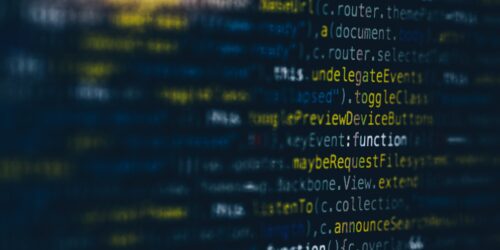
Promoting Student Confidence, Critical Thinking, and “Task Stewardship” with AI
Researchers are examining how critical thinking, confidence, and generative AI (AI) use interrelate, revealing important insights for student learning. This post considers promoting critical thinking with AI by building students’ self-confidence while engaging in what Lee et al. (2025) describe as “task stewardship” rather than simple task execution.
The Novice’s Dilemma: Critical Thinking Barriers Using AI
Punya Mishra (2025) discusses a Microsoft Research study highlighting a challenge in AI-integrated learning: students often lack domain expertise and AI knowledge, leading to an overreliance on AI-generated outputs and less cognitive effort. In contrast, experts — who have deep domain knowledge — tend to apply more cognitive effort when using AI, even when they have limited knowledge about it (Lee et al., 2025).
To illustrate the difference between experts and novices, Mishra maps AI users by using two dimensions: domain knowledge and AI knowledge.
| AI KNOWLEDGE LEVEL | LOW DOMAIN KNOWLEDGE | HIGH DOMAIN KNOWLEDGE |
|---|---|---|
| HIGH AI KNOWLEDGE | The False Confidence Trap (Trusting AI too much, despite limited domain knowledge) | The Dual Expertise Challenge (Effortful but effective AI use) |
| LOW AI KNOWLEDGE | The Novice’s Dilemma (Over-reliance on AI due to lack of expertise in both areas) | The Expert’s Advantage (Using AI as a tool while applying critical thinking) |
Mishra points out, “If [domain] expertise is a key prerequisite for effective AI use, then learners – who are by definition not experts – are in a particularly vulnerable position. […] They typically fall into our most challenging quadrant: novices in both the domain and understanding AI’s capabilities and limitations” (para. 15). Students who fall into the “Novice’s Dilemma” quadrant are more prone to trusting AI uncritically and using AI more quickly. This vulnerability means they are less likely to apply effortful thinking when using AI, leading to shallow engagement with tasks.
Encouraging Effortful Thinking Through Confidence-Building
Instead of just warning students about AI risks, boosting their confidence in domain knowledge and AI literacy may be more effective, helping them move from the “Novice’s Dilemma” to “The Expert’s Advantage” quadrant.
Lee et al. (2025) found that study respondents were more likely to apply critical thinking in AI tasks when motivated by the following ideas:
- Improve work quality – Refine and enhance AI-generated outputs, rather than passively accept them, especially by looking for gaps and problems.
- Avoid negative outcomes – Be reminded that unchecked AI errors can lead to misinformation, bias, or social conflict, especially in high-stakes fields.
- Skill development – See AI as a learning tool that can be used as self-improvement rather than a replacement for one’s own expertise.
By incorporating these motivators into learning tasks with (and without) AI, you can help students transition how they think about using AI, from simply completing a task to being a steward of that task.
From Task Execution to Task Stewardship
Lee et al. (2025) describe a fundamental shift in cognitive demands in the AI era: “As AI takes on aspects of traditional knowledge work, human expertise is shifting from task execution to task stewardship” (p. 15). AI may be able to complete tasks, but (at this point) only humans can be effective supervisors or caretakers of task completion that involves AI.
How can you help students to shift their thinking toward task stewardship? It can involve highlighting how and where cognitive tasks are changing in your field or industry due to AI.
- Less necessary cognitive tasks – AI can automate some tasks, such as information retrieval, allowing students to focus on curation and interpretation.
- New cognitive tasks – Students must now assess AI-generated outputs, ensuring they align with quality standards and expectations.
- Evolving cognitive tasks – Students must become proficient at cross-checking AI-generated content with external sources to verify accuracy and mitigate bias.
Help students move toward Mishra’s “Expert’s Advantage” quadrant by designing learning tasks that develop their domain knowledge and AI literacy. By doing so, students will develop more self-confidence for the effortful thinking demonstrated by domain experts (Lee et al., 2025).
Strategies to Build Confidence through Domain and AI Expertise
Use the accordion boxes to explore five ways to facilitate students’ use of AI in learning tasks in ways that will build their self-confidence, trusting themselves more and AI less.
1. Demonstrate Critical Thinking (With AI) in Tasks
Students often struggle to see how experts critically engage with AI outputs. You can showcase how domain knowledge and human oversight shape effective AI use by modelling verification, re-prompting, and extending AI-generated ideas. This helps students understand that AI is not a substitute for expertise but a tool requiring skilled intervention. See Critical Thinking with AI: 3 Approaches.
2. Provide Authentic, Real-World Learning Tasks
Encourage students to apply domain and AI knowledge to real-world scenarios, demonstrating how experts use AI as a tool rather than a crutch. By using AI in realistic situations, students can appreciate using AI within specific settings, problems, and outcomes they may likely face in their future workplaces where AI is increasingly integrated into decision-making processes.
Engaging with authentic tasks can also show the risks of unchecked AI outputs, particularly in high-stakes situations. Misinformation, bias, or flawed decision-making can emerge when AI-generated content is used without scrutiny, making it essential for students to develop the habit of verifying and refining what AI produces.
3. Low-Stakes Active Learning Tasks
By incorporating AI into low-stakes classroom activities, students can engage with the technology in a way that allows them to build their confidence over time. Low-stakes tasks can help students become more aware of how AI is reshaping the cognitive demands of learning, as they get hands-on experience with AI’s strengths and limitations. When you guide critical dialogue about AI’s role in tasks, students can become more discerning users who can leverage AI effectively while maintaining intellectual autonomy (Paul & Elder, 2020).
4. Positive Reinforcement Before, During, and After AI Use
AI, and learning with AI, is new, and new things can cause uncertainty and stress. Your positive comments when students select ideas, question outputs, refine prompts, and use AI features can reduce uncertainty and build their confidence. You can also show students how to use AI for their own self-improvement. This reinforces the idea that students can use AI to enhance their own skills, helping them to build critical thinking skills and move from dependence to mastery.
5. Challenge the Productivity Myths of AI
Mishra (2025) and Salvaggio (2024) argue that the myth of AI as a purely time-saving tool can lead students to assume AI will handle critical thinking for them. Instead, have students discuss situations where it is appropriate to automate tasks when AI use requires expert oversight to be effective, and when tasks are too important or sensitive to automate. Encourage students to track how long it takes to complete a task with AI, then discuss the value of one more prompt or step in the process.
Growing Experts in AI-Supported Thinking
Mishra (2025) and Lee et al. (2025) both emphasize that AI use requires expertise, not blind trust. By designing learning tasks that build both domain knowledge and AI literacy, educators can move students out of The Novice’s Dilemma, where confidence in AI is associated with reduced critical thinking effort, and into The Expert’s Advantage—where self-confidence is associated with increased critical thinking effort, and AI is used as a thinking partner, not a shortcut.
The key to wise AI use is not avoiding AI altogether but ensuring that students gain confidence in their own expertise to use AI critically. By fostering a sense of task stewardship, educators can prepare students for academic success and a future career where AI supports, but does not replace, thinking.
References
Lee, H.-P., Sarkar, A., Tankelevitch, L., Drosos, I., Rintel, S., Banks, R., & Wilson, N. (2025). The impact of generative AI on critical thinking: Self-reported reductions in cognitive effort and confidence effects from a survey of knowledge workers. Microsoft Research.
Mishra, P. (2025, February 13). The GenAI and expertise paradox: Why it makes expert work more important but harder. Punya Mishra’s Web.
Paul, R., & Elder, L. (2020). Critical thinking: Tools for taking charge of your learning and your life. Pearson.
Salvaggio, E. (2024, August 29). Challenging the myths of generative AI. TechPolicy.Press.
AI Use Statement
I asked Copilot to clarify ideas proposed in an article by Punya Mishra. I then inquired about strategies to build student self-confidence, requesting evidence-informed methods appropriate for college-level education. The AI tool provided a detailed strategy, which I asked to be supported by additional resources. I also requested APA 7 references for several articles. I asked for a high-level, accessible post summary, followed by an even shorter summary that connected research findings to strategies for building student confidence. I provided a revised copy and asked the AI tool to format it for Word, removing all AI-generated content.






